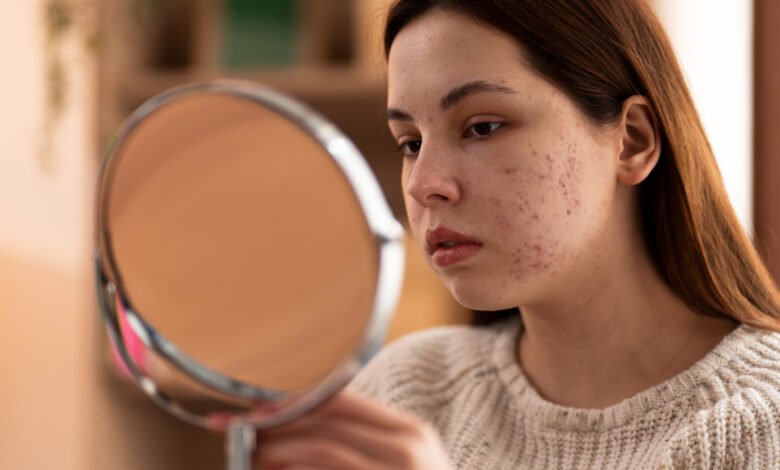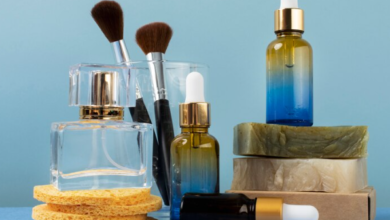Solutions for the Most Common Types of Acne, According to Dermatologists

Acne is a common skin condition that affects millions of people worldwide, regardless of age or gender. While it can be a source of frustration and self-consciousness, understanding its causes and solutions is the first step to managing it effectively. Dermatologists have identified various types of acne and recommend tailored solutions for each. Here’s a breakdown of the most common types of acne and how to treat them.
1. Whiteheads and Blackheads (Comedonal Acne)
Causes:
Comedonal acne arises when hair follicles become clogged with dead skin cells, oil, and debris. Whiteheads are closed comedones, while blackheads are open comedones where the trapped material oxidizes and turns black.
Solutions:
- Topical Retinoids: Over-the-counter (OTC) retinoids like adapalene unclog pores and prevent the formation of new comedones.
- Salicylic Acid: This beta-hydroxy acid (BHA) helps exfoliate the skin and remove excess oil. Look for salicylic acid in cleansers or spot treatments.
- Consistent Cleansing: Use a gentle cleanser to keep the skin free of impurities without stripping it of its natural moisture.
2. Papules and Pustules (Inflammatory Acne)
Causes:
Inflammatory acne occurs when clogged pores become inflamed due to bacterial growth, leading to red bumps (papules) or pus-filled lesions (pustules).
Solutions:
- Benzoyl Peroxide: This antimicrobial agent reduces bacteria and inflammation. Use it as a spot treatment or as part of a cleanser.
- Topical Antibiotics: Clindamycin or erythromycin, often combined with benzoyl peroxide, can effectively manage bacterial growth.
- Non-Comedogenic Products: Switch to non-comedogenic moisturizers and makeup to prevent further irritation.
3. Nodules and Cysts (Severe Acne)
Causes:
This type of acne occurs deep within the skin and is often painful. It is usually caused by hormonal imbalances, excessive oil production, or bacterial infections.
Solutions:
- Oral Medications: Dermatologists may prescribe oral antibiotics or isotretinoin for severe cases. Isotretinoin is highly effective but requires careful monitoring.
- Corticosteroid Injections: For large, painful nodules or cysts, a dermatologist may inject a corticosteroid to reduce inflammation.
- Hormonal Therapy: Birth control pills or anti-androgens like spironolactone can regulate hormones and reduce oil production in women.
4. Hormonal Acne
Causes:
This type of acne is linked to hormonal fluctuations, often around the menstrual cycle, during pregnancy, or due to conditions like polycystic ovary syndrome (PCOS). It typically appears on the jawline and chin.
Solutions:
- Hormone-Regulating Medications: As mentioned, birth control pills and spironolactone can help.
- Retinoids and Benzoyl Peroxide: Combine topical treatments to target clogged pores and bacteria.
- Diet Adjustments: Some studies suggest reducing dairy and high-glycemic foods to minimize hormonal spikes that can trigger acne.
5. Fungal Acne (Pityrosporum Folliculitis)
Causes:
Fungal acne is caused by an overgrowth of yeast in the hair follicles. It looks similar to regular acne but is itchy and appears as uniform bumps.
Solutions:
- Antifungal Treatments: Products containing ketoconazole or selenium sulfide can reduce yeast overgrowth.
- Avoid Occlusive Products: Use lightweight, non-comedogenic skincare products to prevent yeast from thriving.
- Shower After Sweating: Fungal acne can worsen due to sweat; shower promptly after exercise or hot weather exposure.
6. Acne Mechanica
Causes:
This type of acne is caused by friction, heat, or pressure on the skin, often from wearing helmets, masks, or tight clothing.
Solutions:
- Barrier Creams: Apply a protective layer of zinc oxide cream to areas prone to friction.
- Frequent Cleansing: Keep the affected area clean and dry.
- Avoid Tight Clothing: Opt for breathable fabrics to reduce irritation.
General Tips for Acne Management
- Develop a Skincare Routine: Cleanse, treat, and moisturize twice daily with products suited for your skin type.
- Avoid Picking at Acne: Picking can lead to scarring and prolong healing.
- Sun Protection: Use a broad-spectrum sunscreen to prevent hyperpigmentation and skin damage.
- Hydrate and Eat Well: Stay hydrated and maintain a balanced diet rich in antioxidants to support skin health.
- Consult a Dermatologist: If OTC products don’t work, seek professional advice to find the right treatment plan.
When to See a Dermatologist
If your acne is persistent, painful, or affecting your confidence, it’s time to consult a dermatologist. They can provide personalized treatments and advanced therapies to manage your condition effectively.
Final Thoughts
Acne might be a common issue, but with the right solutions, it’s manageable. Understanding your acne type and sticking to a consistent skincare routine is key. Remember, improvement takes time, so be patient and give your treatments a chance to work. With expert guidance, clearer skin is within reach!




